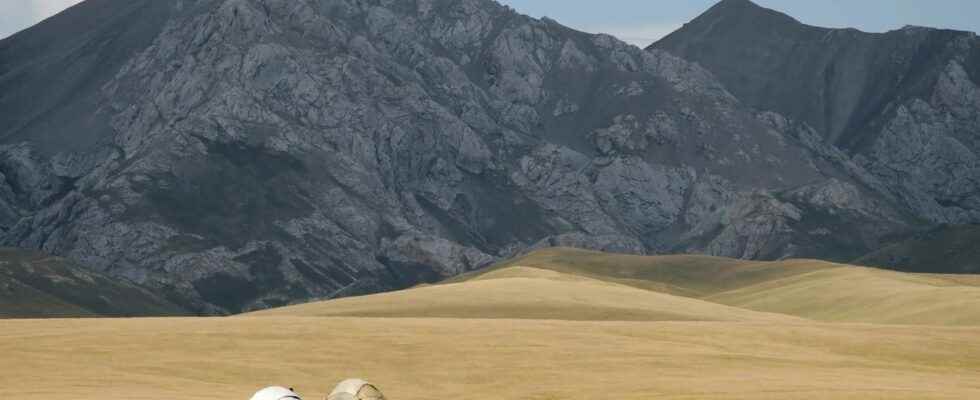Rising temperatures. Decreasing rainfall. This is how, under the effect of anthropogenic climate change, the desert climate has progressed by a hundred kilometers towards the north on the side of Central Asia since the 1980s.
You will also be interested
[EN VIDÉO] Global warming: our planet in unknown territory In the preliminary version – which only covers the first nine months of 2021 – of its annual State of the Global Climate report, the World Meteorological Organization (WMO) confirms the trend of global warming. For the first time, the bar of a rise of 1°C compared to pre-industrial averages has been crossed over the period of the last twenty years. But the report above all highlights the many extreme weather phenomena that have occurred in 2021 and their consequences for the planet and for humanity. © World Meteorological Organization
In the central asia, on the side of Kazakhstan, Kyrgyzstan, Tajikistan, Turkmenistan and Uzbekistan, live some 70 million people, the majority of whom live in a semi-arid climate, in which it is hot and there is little rain . Thereby, “a small decrease in the amount of precipitation that falls during the growing season can be catastrophic for local agricultural production and population”explains Qi Hu, professor at the University of Nebraska (United States), in a communicated.
It is this vulnerability displayed at climate change anthropogenic that prompted him to examine how temperatures, precipitation, vegetation and ecology have evolved in the region since the middle of the 20the century. The researchers found that while the arid areas tended to move northward, the wetter, colder regions in the north tended to nibble on the south. Literally squeezing the hitherto semi-arid region.
I have said over and over to keep an eye on Central Asia for various reasons. Here’s another one.https://t.co/ml4WpSthrO
— ???????????? ??????????????????????????????????????????? (@shrugdeaIer) July 21, 2022
Coming tensions on the water
As a result, a new atmospheric circulation has set up. A circulation that acts as “a killer of clouds». With the key for the future, probably, a climate that becomes quite markedly desert.
Another finding of the researchers, while over the period between 1960 and 1980 and that between 1990 and 2020, the temperatures of certain regions of Central Asia rose by around 5 ° C, precipitation increased this time at high altitudes. . It now rains up to 20 centimeters more per year than before. Enough to melt the glaciers . With immediate benefit in matterwater for local people. But a benefit that could hide a longer-term difficulty. “In 20 or 30 years, the glaciers will have disappeared. Only the summer rainfall will remain to meet the needs of the populations. It won’t be enough to support the agricultural production»explains Qi Hu.
A desire to escape for the summer?
To celebrate the holidays as it should be, discover the Mag Futura at the preferential price of €15 instead of €19, i.e. a reduction of 20% !
On the program of this issue: a dive into the heart of 4 scientific themes that will mark 2022, from the Earth to the Moon:
- What mysteries does the Moon still hide from us?
- Will we soon be able to cure everything thanks to genes?
- How to feed the world without destroying it?
- Can artificial intelligence become truly intelligent?
What is Mag Futura?
- Our first paper journal of more than 200 pages to make science accessible to as many people as possible
- 4 major scientific questions for 2022, from the Earth to the Moon
- Home delivery*
*Delivery is made in France (excluding metropolitan France), Switzerland, Belgium.
Interested in what you just read?
